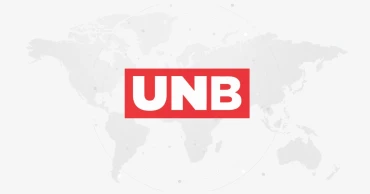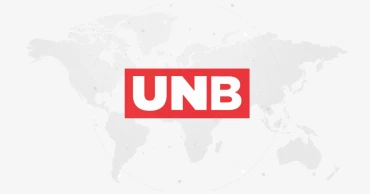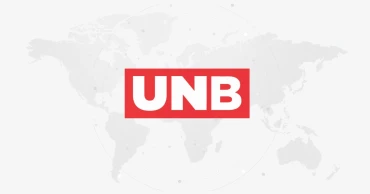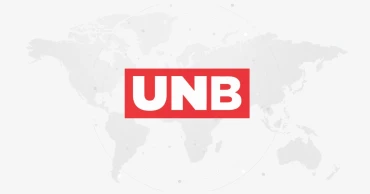Mahsa Amini
22,000 arrested in Iran protests pardoned
The head of Iran's judiciary says 22,000 people arrested in the recent protests that swept the Islamic Republic have been pardoned.
The state-run IRNA news agency quoted Gholamhossein Mohseni Ejehi on Monday as announcing the figure. The Associated Press could not independently verify the statement.
State media previously suggested Supreme Leader Ayatollah Ali Khamenei could pardon that many swept up in the demonstrations ahead of the Muslim holy fasting month of Ramadan.
The protests began in September over the death of a 22-year-old woman named Mahsa Amini after she was detained by the country's morality police.
2 years ago
Iranian general acknowledges over 300 dead in unrest
An Iranian general on Monday acknowledged that more than 300 people have been killed in the unrest surrounding nationwide protests, giving the first official word on casualties in two months.
That estimate is considerably lower than the toll reported by Human Rights Activists in Iran, a U.S.-based group that has been closely tracking the protests since they erupted after the Sept. 16 death of a young woman being held by the country's morality police.
The activist group says 451 protesters and 60 security forces have been killed since the start of the unrest and that more than 18,000 people have been detained.
The protests were sparked by the death of 22-year-old Mahsa Amini, who was detained for allegedly violating the Islamic Republic’s strict dress code. They quickly escalated into calls for the overthrow of Iran's theocracy and pose one of the most serious challenges to the ruling clerics since the 1979 revolution that brought them to power.
Read more: Activists: Iranian forces unleash heavy fire on protesters Activists: Iranian forces unleash heavy fire on protesters
Gen. Amir Ali Hajizadeh, the commander of the aerospace division of the paramilitary Revolutionary Guard, was quoted by a website close to the Guard as saying that more than 300 people have been killed, including “martyrs,” an apparent reference to security forces. He also suggested that many of those killed were ordinary Iranians not involved in the protests.
He did not provide an exact figure or say where his estimate came from.
Authorities have heavily restricted media coverage of the protests. State-linked media have not reported an overall toll and have largely focused on attacks on security forces, which officials blame on shadowy militant and separatist groups.
Hajizadeh reiterated the official claim that the protests have been fomented by Iran's enemies, including Western countries and Saudi Arabia, without providing evidence. The protesters say they are fed up after decades of social and political repression, and deny having any foreign agenda.
The protests have spread across the country and drawn support from artists, athletes and other public figures. The unrest has even cast a shadow over the World Cup, with some Iranians actively rooting against their own national team because they see it as being linked to the government.
The niece of Iran's Supreme Leader Ayatollah Ali Khamenei recently called on people to pressure their governments to cut ties with Tehran over its violent suppression of the demonstrations.
In a video posted online by her France-based brother, Farideh Moradkhani urged “conscientious people of the world” to support Iranian protesters. The video was shared online this week after Moradkhani's reported arrest on Nov. 23, according to the activist group.
Moradkhani is a long-time activist whose late father was an opposition figure married to Khamenei's sister and is the closest member of the supreme leader's family to be arrested. The branch of the family has opposed Khamenei for decades and Moradkhani has been imprisoned on previous occasions for her activism.
“I ask the conscientious people of the world to stand by us and ask their governments not to react with empty words and slogans but with real action and stop any dealings with this regime,” she said in her video statement.
Read more: Iran sentences anti-government protester to death: Report
The protests, now in their third month, have continued despite a brutal crackdown by Iranian security forces using live ammunition, rubber bullets and tear gas.
Iran refuses to cooperate with a fact-finding mission that the U.N. Human Rights Council recently voted to establish.
“The Islamic Republic of Iran will not engage in any cooperation, whatsoever, with the political committee,” Foreign Ministry spokesman Nasser Kanaani said Monday.
In a separate development, Iran released a 76-year-old dual Iranian-Austrian citizen from prison for health reasons, the Austria Press Agency reported.
APA quoted the Austrian Foreign Ministry confirming that Massud Mossaheb was given indefinite medical leave. The ministry said “intensive diplomatic efforts” had led to his release, which was first reported by Austrian daily Die Presse. There was no immediate comment from Iran.
Mossaheb was arrested on suspicion of espionage in early 2019 during a visit to the capital, Tehran, and later sentenced to 10 years in prison. He must remain in Iran and report to authorities every other week, APA reported.
Iran has detained several dual nationals in recent years on charges of threatening national security. Analysts and rights groups accuse hard-liners in Iran’s security agencies of using foreign detainees as bargaining chips in negotiations or prisoner swaps with the West, which Tehran denies.
3 years ago
Iran’s elite technical university emerges as hub of protests
Thousands of Sharif University alumni power Iran’s most sensitive industries, including nuclear energy and aerospace. One of supreme leader Ayatollah Ali Khamenei’s closest advisors has taught there for decades.
But as demonstrations erupt across Iran — first sparked by the death in September of 22-year-old Mahsa Amini in the custody of the country’s morality police — the scientific powerhouse known as “Iran’s M.I.T.” has emerged as an unexpected hub for protest, fueling Iran’s biggest antigovernment movement in over a decade.
“We’ve become politically active because there is nothing to lose,” said an electrical engineering major and activist in Sharif University’s student association who spoke on condition of anonymity. Like others who insisted their identities be shielded, he feared of reprisals. “The way things are now in Iran, you have to emigrate and leave your family and friends or stay and fight for your rights.”
Across the country and despite a violent crackdown, Iranians have taken to the streets, venting their outrage over social repression, economic despair and global isolation — crises that have clipped the ambitions of Iran’s young and educated generation. Over the last few weeks, university campuses have become a hotbed of opposition after years of dormancy, as students take up the mantle of activism they haven’t held in years.
“Students have come to the realization they will not achieve their rights in this framework,” said Mohammad Ali Kadivar, an Iran scholar at Boston College. “They are demanding the end of the Islamic Republic.”
Protests have flared nearly every day for the past month at Sharif University — and escalated after security forces cracked down violently on Oct. 2, resulting in an hourslong standoff between students and police that prompted an international outcry and shocked the country.
“Whether it’s true or not, people have this feeling that it’s safer to protest on campus,” said Moeen, a Sharif University alum who has observed the protests and spoke on condition that only his first name be used. “It’s easier than orchestrating something at a random square in Tehran. There are student syndicates. There’s leadership.”
University campuses have been pivotal to Iran’s opposition movements before. After the U.S.-backed 1953 coup, University of Tehran students revolted over then-Vice President Richard Nixon’s visit to the capital. The shah’s security forces stormed the campus and shot three students dead.
Sharif University, among other campuses, was wracked by protests two decades later, when Marxist and Islamist student groups lit the fuse of the 1979 Islamic Revolution, which ushered in the clerical establishment that still rules Iran.
Once in power, the young theocracy worked to ensure universities would no longer be breeding grounds for opposition: The clerics purged professors, arrested dissident students and set up their own powerful student associations.
Political issues occasionally galvanized students despite the risks. Pro-reformist students protested at the University of Tehran in 1999, prompting a fearsome raid by security forces who fatally shot a student and flung others out of windows.
But broadly over the decades, Tehran’s campuses became subdued, students and experts said, particularly Sharif University — a competitive, high-tech hub considered less liberal and activist than others in the capital. Amid American sanctions and raging inflation, some students joked the university was essentially an airport, as the best and brightest students rushed to leave for Europe and the U.S. after graduation.
A turning point came in 2018, students said. Former President Donald Trump pulled the U.S. out of Tehran’s landmark nuclear deal that year and reimposed harsh sanctions. Deepening global isolation and frustration over lagging political reforms convinced many students that nothing would come of engaging with the system.
A year later, in the fall of 2019, a fuel price hike set off the deadliest nationwide unrest since the Islamic Revolution. The Sharif Islamic Association, a misnomer for the students’ largely secular representative body, jumped into action, organizing demonstrations on campus.
In 2020, the student group boycotted classes and held a protest vigil after the Iranian military’s downing of a Ukrainian passenger plane killed 176 people, including over a dozen Sharif University graduates. Later that year, authorities arrested two top students on widely disputed security charges, stoking outrage.
“We have no industry, we are in a bad economic situation, the environment is ruined,” said the student association activist, listing the reasons for protest. “But the biggest reason is freedom. We just want basic things that you have all over the world.”
When news spread of Amini’s death after her arrest for allegedly violating Iran’s strict rules on women’s dress, students buzzed. Iran’s government insists Amini was not mistreated in police custody, but her family says her body showed bruises and other signs of beating after she was detained.
“Even my conservative friends said, ‘If we don’t take to the streets now, we never will’,” Moeen said.
Sharif University authorities denied the student association a protest permit, members said. Crowds demonstrated anyway, pumping their fists and chanting “Death to the dictator!” — a slogan that protesters have used around the country.
On Oct. 2, the protests devolved into violent mayhem, according to statements from the association.
As hundreds of students chanted against Khamenei, plainclothes security forces stormed campus. Professors formed a human shield so students could flee. But security forces beat the professors, ripped through their interlocked hands and chased protesters into the parking garage.
They unleashed paintballs, tear gas and metal pellets on shrieking students. Several were wounded and some 40 were arrested, most of whom have now been released.
Tensions were further inflamed when the minister for higher education, Mohammad Ali Zolfigol, visited the campus and, instead of reassuring students, accused them of “lawlessness” and warned they’d be held responsible, according to a computer engineering student who attended the meeting and videos posted online.
In an attempt to defuse the resentment, the university created a forum, billed as a safe space for students to voice their complaints. The university president, the U.S.-sanctioned Rasool Jalili, who served on Iran’s Supreme Council of Cyberspace, presided over the program.
Women boldly took the stage without the mandatory hijab, according to videos shared by members of the association. Students lashed out at the university for its failure to protect them.
And there were consequences to speaking out. On Sunday, the university announced it would temporarily ban over two dozen students who contributed to the “unstable environment.”
That prompted more demonstrations, as students raged against both university authorities and the ruling clerics. Most recently this week, female students streamed into the male-only section of the dining hall in protest over campus gender segregation as male students cheered them on. The university closed the cafeteria on Tuesday, hoping to end the demonstrations.
Instead, the students moved their lunch to the campus yard, videos showed. A professor joined in solidarity. Young women and men picnicked side by side on the pavement, chanting: “Woman! Life! Freedom!”
3 years ago
Hijab protests: US takes action to increase Iranians’ access to internet
The United States is stepping up its support for the free flow of information to the Iranian people, according to Deputy Secretary of the Treasury, Wally Adeyemo, as Iranians take to the streets to condemn the killing of Mahsa Amini.
After Ebrahim Raisi’s administration blocked internet access for the majority of Iran, US Treasury Department issued licences on Friday to broaden the selection of internet services available to Iranians, Al Arabiya reports.
Amini, a 22-year-old Kurdish-Iranian women, was taken into custody last week for “improper hijab” and shortly thereafter went into a coma. She passed away on Friday – sparking protests in Iranian streets and on social media.
Read: At least 26 dead from protests in Iran, suggests state TV as violent unrest continues
Foreign diplomats based in Tehran and internet monitoring organizations claim that several regions of the nation have blocked or restricted access to the internet, the Al Arabiya report says.
US Deputy Secretary of Treasury, Wally Adeyemo, was quoted: “As courageous Iranians take to the streets to protest the death of Mahsa Amini, the United States is redoubling its support for the free flow of information to the Iranian people.”
He claimed that the US was assisting Iranians in becoming better armed to thwart efforts by the government to restrict them.
Read: Protests over hijab: Iranians experience near-total internet blackout
The licences, according to US Secretary of State Antony Blinken, will enable IT companies to offer more digital services to Iranians, such as cloud computing services, to enhance their online security and privacy.
Following the most recent fatal protests and the death of Mahsa Amini, the US issued sanctions against Iran's morality police and six Iranians on Thursday. Iran Human Rights claims that during the protests, Iranian security forces had killed at least 31 citizens (IHR).
3 years ago







